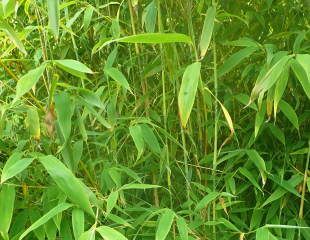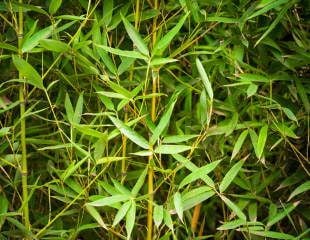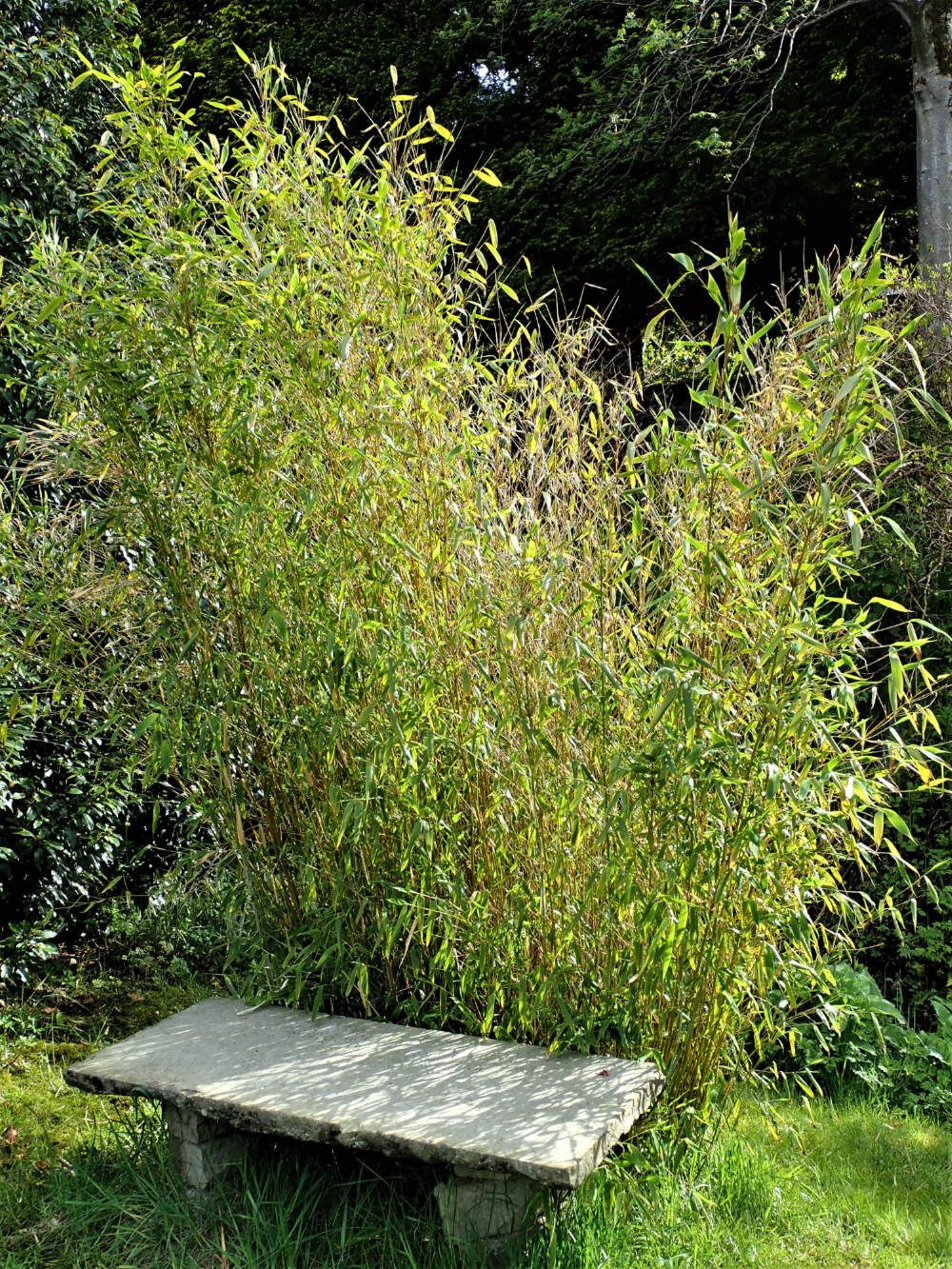

Plant non-invasive bamboo in the garden.
Bamboo is a popular choice for the garden and available online and in garden centres.
Many bamboos are spectacular, with beautiful coloured canes in shades of rosy red, mellow yellow, black, bold greens. The plant descriptions make bamboo sound tempting, "fully hardy instant screening", but they can be absolute thugs, which run amok in the garden and into next door's garden. They are hard to contain and almost impossible to kill.
The key is to check, and check again, and to buy a non-invasive clumping variety as opposed to bamboos known as "runners". In the images above, one is a good bamboo (left) and one is a bad bamboo (right.) You cannot tell by looking at them it's a question of picking the right one. Having checked out a few on-line retailers, most seem to be silent whether the bamboo is invasive, but there is sometimes a hint when the retailer suggests surrounding the roots with a non perishable barrier. Truth is, it is very difficult to contain a running bamboo with a physical barrier. Just give it a miss.
Bamboos have a bad reputation. But they also have charm and you can have a well-behaved bamboo in your garden that does not take over or send out massive runners to invade the rest of the garden. Bamboo can be useful for screening areas or objects and providing you pick the right one. It's safe to grow.
A "non-invasive" bamboo is a tautology, as there is no such thing as a totally non-invasive bamboo as it is a vigorous plant. However, there are several varieties which are not classified as invasive, which are relatively well behaved and will not take over yours and your neighbour's garden.

Which bamboos are the best to grow?
Bamboo, which is safer to grow in the garden, is known as "clump-forming" as opposed to "running" bamboo, which, as its name suggests, produces long underground rhizomes from which they spread rapidly. The Bamboo illustrated making a shady seat is Fargesia, and I planted it in this spot about 10 years ago. It is clear from the image is that it is of a manageable size and well contained.
Non invasive bamboo ideas :
Fargesia of which there are several popular varieties. Commonly grown Crocus has three varieties for sale, F. rufa, F 'Red panda' and F.murielae, more information and prices (affiliate link)
Shibataea is a short form of bamboo, which is low growing and although it has rhizomes, it does not spread uncontrollably is because of its short bushy growth is ideal to grow in a container.
Bambusa is a medium to a large clump-forming variety of Bamboo.
Where more space permits, Himalayacalamus hookerianus is known as the Blue Bamboo for its lovely blue canes, it will grow large but is not invasive.
Shibataea kumasaca reaches up to around 1.5 meters remaining, in Bamboo terms, compact.
If you are considering planting near a pond, which is a popular choice, just think about the pond liner and ensure the bamboo is not too close. It is probably considerate not to plant near a boundary so that it will not spill over to your neighbour's garden or into the wild. Remember all bamboos are vigorous and so not safe to plant near foundations, structures, boundaries, ponds and if you are not sure, go for a safer choice, say grasses.
Bamboos to avoid planting
Avoid planting the following bamboos which are considered invasive:
Phyllostachys aurea common name Golden bamboo
Pseudosasa japonica common name Arrow bamboo
Phyllostachys aureosulcata common name Yellow groove bamboo
Phyllostachys bissetii common name just Bissetii
Phyllostachys rubromarginata Red margin bamboo
Phyllostachys nigra Black bamboo
There are many more invasive bamboos and Wiki has a list of all bamboos classified as runner or clumper, well worth checking before you buy.
